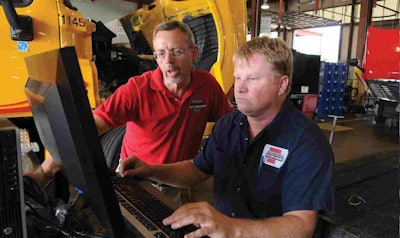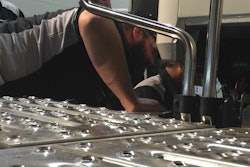
In providing an update to the independent aftermarket distributors on hand at Monday’s opening general session of the Commercial Vehicle Solutions Network (CVSN) Aftermarket Distribution Summit in Vancouver, Commercial Vehicle Right to Repair Coalition President Marc Karon says last year’s agreed to Repair Memorandum of Understanding has drastically helped level the playing field for the independent service channel against OE dealers. But Karon says there are still a fair number of kinks that need to be worked out.
“Our biggest challenge right now is finding out what we don’t have,” says Karon, president at Total Truck Parts. “We do not have 100 percent of what we’re supposed to have.”
Karon says multiple OEMs have been slow to provide all diagnostic software and in some cases the tools provided are unable to do everything they’re supposed to. Acquiring VIN to part number cross reference guides also has been a challenge.
In these cases Karon says it is imperative for aftermarket service providers to submit a Service Information Request (SIR) to the National Automotive Service Task Force (NATSF), so NASTF can alert the OEM to the error and ensure it is properly fixed.
Karon is optimistic that the Truck & Engine Manufacturers Association (EMA) will continue to be an ally and should be able to spur OEMs to change in time. For the most part the MOU is being followed, and at this time the independent aftermarket sees no reason to challenge its validity with further action.
Additionally, Karon says the aftermarket also needs to be aware of other areas of the service business where OEMs and dealers are trying to shut independents out. He specifically mentions the Magnusson-Moss Warranty Act; which states warrantors cannot require only branded parts be used within a product to retain its warranty. He says any OEM product that features language that would be illegal within that definition should be flagged so the industry can address it.
Then there’s training and telematics. Karon is optimistic that the latter will be addressed via legislation or a further MOU. As for training, he’s says the aftermarket is on its own.
“They will not give us training. That’s something we have to figure out ourselves,” he says.
The CVSN Technician Training tab on the organization’s website is the aftermarket’s first response to that need.













